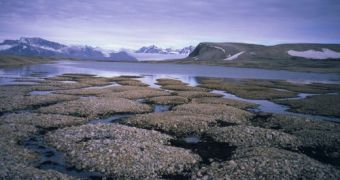The US Geological Survey (USGS) now warns that, as a result of climate change and increased average temperatures worldwide, the Arctic permafrost is to begin thawing ever more strikingly as the years go by.
Rising sea levels and reshaped landscapes aside, this might not be such a big problem were this frozen ground not to contain significant amounts of nitrogen and carbon.
The researchers who looked into this issue explain that, according to their estimates, the Arctic permafrost is presently housing about 44 billion tons of nitrogen and 850 tons of carbon, most of which will get released into the atmosphere as the region grows warmer.
One could argue that modern society and the Arctic are quite far from one another and that the consequences of this phenomenon might in fact go unnoticed, yet specialists warn that both these chemical compounds (i.e. the nitrogen and the carbon) will have a noteworthy negative impact on ecosystems worldwide.
Commenting on the findings of this study, USGS Director Marcia McNutt explained how, “This study quantifies the impact on Earth's two most important chemical cycles, carbon and nitrogen, from thawing of permafrost under future climate warming scenarios.”
“While the permafrost of the polar latitudes may seem distant and disconnected from the daily activities of most of us, its potential to alter the planet's habitability when destabilized is very real.”
This study on the effects of climate change and global warming on the Arctic environment and landscapes can be read in the scientific journal Geophysical Research Letters.
Interestingly enough, one similar research undertaken not very long ago by scientists working with NASA showed that, while the Arctic ice is melting as a result of increased average temperatures and new wind dynamics, the Antarctic is doing the opposite: it is getting bigger.
It is expected that this information concerning ongoing global environmental shifts will be thoroughly discussed during the upcoming Intergovernmental Panel on Climate Change.

 14 DAY TRIAL //
14 DAY TRIAL //